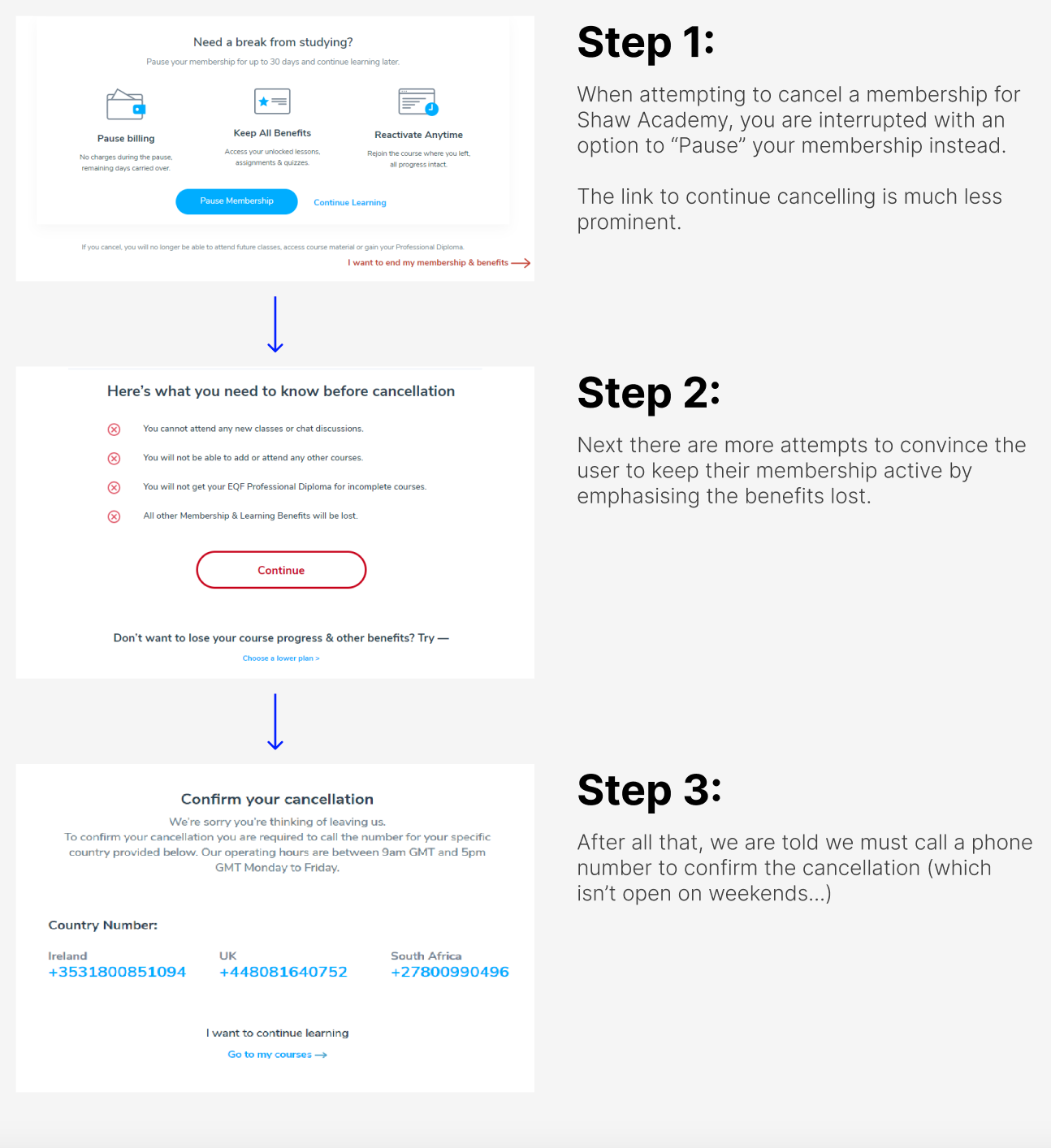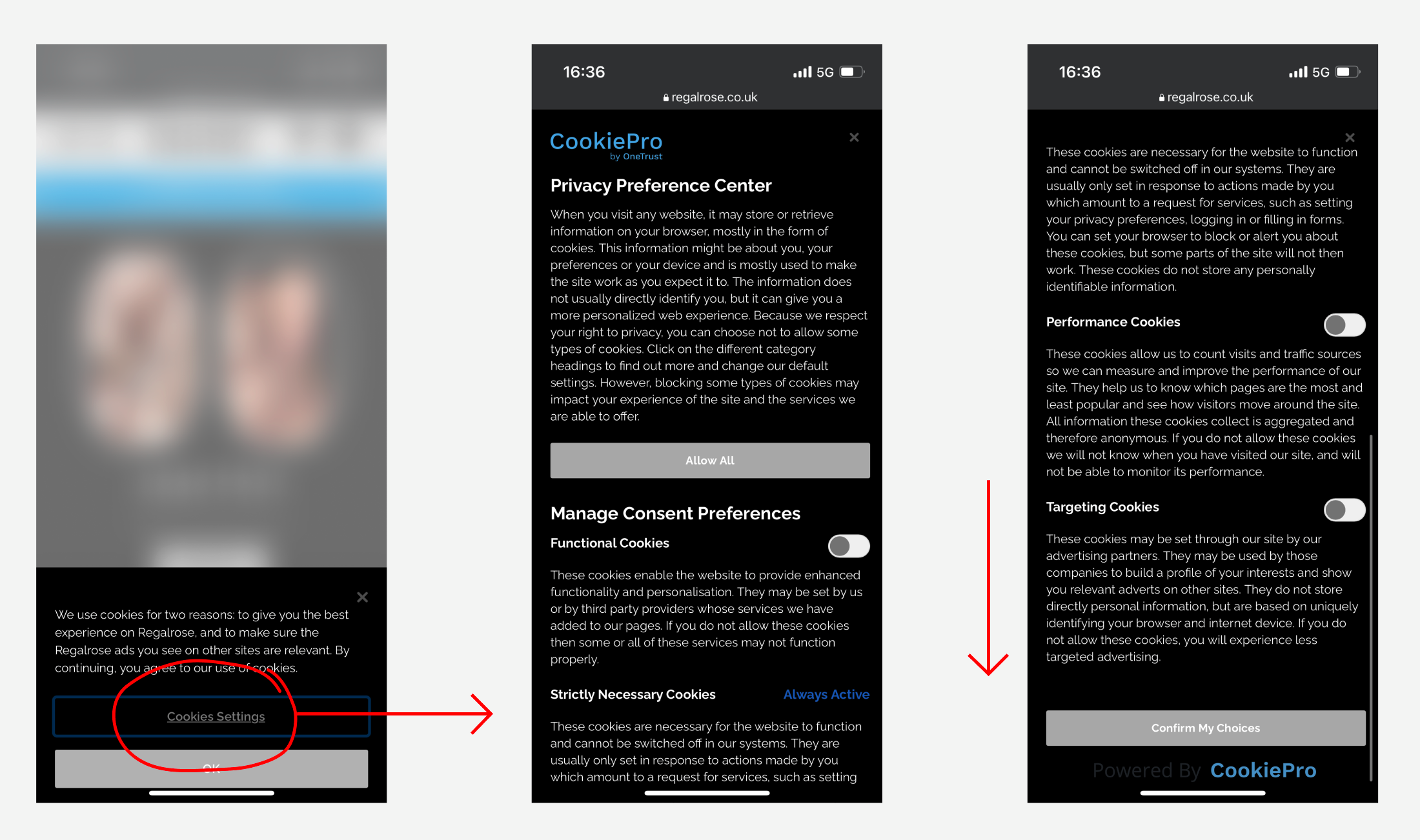Deceptive Design and How it Hurts your Business
In the digital landscape, there are many ways for businesses to get users to click where they want them to click. A positive user experience can leave a lasting good impression on users to keep them coming back. Designers know how users tend to behave on the internet, and so, unfortunately, they can exploit these behaviours to get them to do things they may not want to.
Deceptive Design, otherwise known as “Dark Patterns,” is a user interface designed to trick users into behaving against their own interests.
You’ve probably come across it in your own online activity. Subtle (and not so subtle) user manipulation is fairly commonplace, and quite often utilised by some of the biggest names in tech. Being able to recognise the different types of deceptive designs that appear across the web is the first step in avoiding them, so let’s take a look at some examples.
Deceptive Design in the Wild
Disguised Ads
‘Disguised ads’ are when a part of the user interface is made to look like another functional part that a user might want to click on, like navigation or a search result. Google has been increasingly guilty of this practice over the years. The likelihood of clicking an ad (that Google benefits monetarily from), and an almost visually identical search result is very high. Coupled with the fact that 3 or 4 ads at the top of the screen will push actual search results down the page beyond the fold, it’s even harder to recognise them for what they are.
It wasn’t always this way. Google was one of the first to clearly label its ads and seemed to be a leader in transparency in this area. Over the years they have slowly blended their ads into the search results, making them harder and harder to differentiate. Take a look at the timeline of design changes over the years below by Ginny Marvin, and read the full article for a more in-depth analysis.
Color fade: A history of Google ad labeling in search results https://t.co/guo3jc4kwz pic.twitter.com/LMYqhmgfyE
— Ginny Marvin (@GinnyMarvin) July 25, 2016
Forced Continuity and Roach Motels
Before the subscription model took over digital services, you could simply pay for something once and you’d own it forever. In the modern streaming and software landscape, subscription model payments are almost ubiquitous.
There was a brief time period where one could avail of a free trial without entering credit card details, but no more. Under the guise of ‘seamless user experience,’ companies started to demand credit card details up front, to alleviate the ‘hassle’ of entering these details later on.
In reality, the service provider is relying on the tendency for users to forget about the subscription, and have it charging away in the background into the future. It’s industry standard now, and likely here to stay. Ultimately, if you’re confident in the value your product brings, a free trial without card details shouldn’t be an issue.
The situation is worsened by the tactic known as ‘Roach Motel,’ in which a service is easily signed up for, sometimes even by accident, but then very hard to cancel. I shouldn’t have to call a customer service number and stay on hold just to cancel my subscription!

Privacy and Data Consent
Social Media is known for the dopamine-exploiting ‘slot-machine’ tactics that get users compulsively refreshing their social media feeds. Facebook’s deceptive design tactics don’t stop there either. ‘Privacy Zuckering’ is when “you are tricked into publicly sharing more information about yourself than you really intended to.” It was coined in Facebook’s early days, aptly named after the founder. They were notorious for getting access to your contacts list, which you had probably shared with them without realising.
The online privacy landscape has been evolving over the last 5 years. Following the GDPR introduction in 2018, European companies are required to seek consent when collecting certain data about users and are getting creative with how they discourage you from fully exercising your privacy rights.
Often, opting into maximum data exposure is the default, or framed as a feature of the product; a benefit you can avail of that will result in a ‘more personalised ads experience,’ which certainly sounds like it’s for the user’s benefit and not the company’s… (it’s not). Other times, the action to reject or to configure data consent settings is harder to access, and the wording used in these messages is finely tuned to lead you down the path of least resistance and accept more data consent than you normally would.
Privacy Zuckering definition from: https://www.deceptive.design/types/privacy-zuckering

Common website cookie consent UI, where the option to reject is distanced from the user by more taps and scrolling, while the option to accept all is immediately front & centre.
Other Examples
This is a non-exhaustive list of the kinds of deceptive designs you can find in the wild. The term “dark pattern” was coined by Henry Brignull in 2010, and more recently changed to “deceptive design” to be more inclusive and easy to understand. His is the go-to source for definitions and examples of deceptive design you should be aware of, both as a user and a business owner.
Once we know what deceptive design is, an important question to ask then is; why are they such a bad idea?
How Deceptive Design hurts your business
- Users are becoming more and more aware of the kinds of deceptive tactics that companies employ to influence more clicks, more conversions, and more data consent. If a user feels deceived by something they initially sought help from, it leaves a sour taste and a lasting negative impression in their mind, and they’ll be much less likely to engage with that service again.
- A loyal customer is much more valuable than a new one. Loyal users will continue to use your services into the future, creating repeat business. They might rave to their family and friends. Deceptive design practices might gain you a short-term business win but is a net negative when considering the lasting brand perception it can create with customers, especially for small businesses trying to gain momentum.
- Although most deceptive design is not explicitly illegal (yet..), you might run the risk of breaching data and consumer protection laws depending on the nature of the deceit. All in all, it creates a frustrating and off-putting user experience, and your energy is better placed in business practice that creates value for your customers and earns their trust legitimately.
If Deceptive Design is such a bad idea, why do we see it all the time?
It’s true, deceptive design is still hugely prevalent on the internet for several reasons.
- Big tech companies usually get away with it. They can rely on large established customer bases and brand recognition for continued business.
- There is sometimes pressure on designers from stakeholders who don’t understand the negative long-term effect of employing deceptive design patterns. They see competitors doing the same things and think it must be working. Designers have a responsibility to advocate for better UX, for both the user and the long-term health of the business, but it often falls on deaf ears.
- The pressure from stakeholders comes from a short-sighted approach to boosting revenue, and the capitalist mindset of ever-soaring growth and returns. It doesn’t place users’ interests at the forefront.
- There is also likely an assumption by companies that users don’t care they’re being duped, won’t even realise, or blame themselves for certain mishaps. It can be true in some cases, but with an ever-increasing tech-savvy population, these practices just aren’t sustainable.
So how do you build trust with your users in a sustainable way?
Deceptive Design is often hard to define, as all design has the intent to persuade.
Persuasive design is the art of getting users to do what you want, without being deceptive. We’ve written on the topic before. Read Dave’s article on the 6 Principles of Influence developed by Dr Robert Cialdini and our post on effective persuasive design in action.
Ultimately, the details lie in human psychology, and how you communicate with users in a convincing manner. While there is no moral obligation to be 100% ethical in your design and business practice, your own experience will likely tell you how frustrating it is to be duped, the impression it left on you as a result, and ultimately why deceptive design should be avoided at all costs.
If you want your customers to enjoy a positive user experience throughout their journey with you, get in touch with us.


